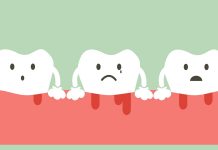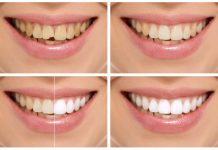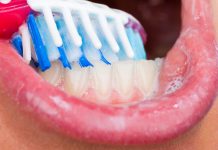Despite spending more than $3 trillion on healthcare, the United States still loses nearly one million people to preventable diseases each year. (1) For this reason and others, more people have been integrating preventative, functional medicine into their wellness routines. Functional dentistry builds on this idea, applying a holistic approach to oral and dental care.
I strongly believe that what happens in the mouth happens in the body, and science has supported this claim. (2) So while it’s good to maintain a healthy weight, take nutritional supplements, and adopt other lifestyle habits that support total body health, it may not be enough.
Functional dentistry applies the same holistic approach to the mouth that functional medicine does to the body. And far from a “fad” or a new trend, functional dentistry relies on many of the same strategies that our ancestors used to keep their mouths healthy—before toothbrushes had even been invented.
This article will outline the core principles of functional dentistry, provide practical tips to implement at home, share advice on how to work with your primary dentist to apply functional dentistry to your own routine.
But before we get to that, let’s take a closer look at what this term really means.
Contents [hide]
- What is Functional Dentistry?
- The Problems with Conventional Dentistry
- Functional Dentistry vs. Conventional Dentistry
- How to Find a Functional Dentist
- How to Apply Functional Dentistry On Your Own
- Final Thoughts
What is Functional Dentistry?
Functional medicine is the practice of digging deeper than the presented symptoms to determine the root of the problem. So instead of simply prescribing medication to lower a patient’s elevated blood pressure, a functional medicine doctor may provide nutrition advice, ask about the patient’s sleep patterns and stress levels, or even advise on meditation and exercise.
Likewise, in functional dentistry, a dentist doesn’t just treat tooth decay, bad breath, or gum disease. He knows that these are merely outward symptoms of larger problems and looks to address those instead. The goal of functional dentistry is to look beyond the mouth: How does the patient eat? Drink? Sleep? Etc.
This approach is completely different from traditional dentistry, which focuses on brushing, flossing, using mouthwash, and visiting a dentist twice per year for cleanings. To be clear, these things are important (well, except for mouthwash, which can destroy beneficial bacteria and create an imbalanced microbiome). But the real key to a healthy mouth centers around one word: DIET.
Like conventional dentists, those practicing functional dentistry use X-rays and dental exams to diagnose problems. The differences in the two disciplines are most evident in the treatment process, as functional dentists examine the eating and lifestyle habits of their patients in order to uncover the root cause of any issues (and to determine the best solution).
Common questions a functional dentist may ask include:
- How much of your diet is comprised of sugar, carbs, and/or highly acidic foods?
- Do you eat mints or candy throughout the day?
- Do you sip on a soda for an hour or longer while you study or watch TV?
- Do you breathe more through your mouth or nose?
These questions may seem unrelated to cavities or gum recession, but the truth is that they provide invaluable information about the state of a patient’s oral microbiome, as well as the dryness and pH level of the mouth. Each of these factors directly impacts the risk for tooth decay, gingivitis, and a host of other concerns.
A functional dentist will not only use a patient’s responses to questions like these to provide treatment. But he will also provide feedback on how to make adjustments to prevent these issues from recurring in the future.
It is this focus on prevention that is one of the primary differentiators between functional dentistry and conventional dentistry.
The Problems with Conventional Dentistry
To be clear, regardless of the methods used to care for your teeth and gums, all dentists attended dental school and had the same educational training, course subjects, and hands-on experience. So I don’t want to give the impression that conventional dentistry is evil in some way.
What I do want to clearly communicate is that, unlike conventional dentistry, which focuses on reacting to a patient’s condition at the time of a visit, functional dentistry is proactive. And like many other functional dentists, I believe that simply filling a cavity, making sure a patient is out of pain, and then sending him on his way until his next cleaning isn’t enough.
Conventional dentistry also fails to properly educate patients on the most important aspects of maintaining good oral and dental health on their own.
For example, it’s not enough to tell people that they should brush their teeth if you’re not also telling them how to brush (gentle, circular motions as opposed to a back-and-forth sawing motion is best). It’s also important to know when to brush and which products are best.
Let’s take a closer look at how conventional dentistry differs from functional dentistry regarding a few common dental issues.
Functional Dentistry vs. Conventional Dentistry
Let’s compare the approaches of functional dentistry and conventional dentistry to common dental issues.
Cavities
The conventional dentist says, “You didn’t brush and/or floss enough; the cavities you have are your fault.”
I’m not implying that all conventional dentists practice shame with their patients. However, it’s common from dentists to blame tooth decay on poor hygiene, or a failure to brush and floss enough. In reality, brushing and flossing are small parts of the equation when it comes to demineralization and the formation of dental caries.
The functional dentist says, “Let’s talk about how your nutrition, lifestyle, and dental hygiene have changed since we last saw each other.”
Dentists practicing functional dentistry know that eating the right foods is the best way to prevent cavities and even heal some that already exist. The proper diet is rich in healthy fats, high-quality proteins, vitamin K2-rich foods, and leafy greens. It also contains minimal processed foods, sugar, grains, and acidic foods and drinks—if it contains any at all.
If your dentist is not counseling you about nutrition and helping you understand how food choices contribute to bacteria growth and cavity formation, keeping future decay at bay will be nearly impossible.
Fillings
The conventional dentist says, “Metal fillings are safe and the option I recommend.”
I’m somewhat shocked at how many dentists have turned a blind eye to the dangers of metal or silver filling materials. Amalgam fillings contain mercury, which is a toxin. Additionally, some alloys contain nickel, which can cause inflammation of the gums.
The functional dentist says, “I only use filling materials that are non-toxic, like composite or gold.”
Some dentists may offer or recommend both varieties of fillings, but I no longer offer amalgam and metal alloy fillings. My patients are far too important to me.
Instead, like other functional dentists (or dentists who are simply willing to offer more alternatives), I offer patients options including composite and gold.
A word of caution here: If you opt for a gold filling, be sure to check that your dentist has a lot of experience with gold inlays, as the technique is somewhat different and requires come unique skill.
Mouthwash
The conventional dentist says, “You should be disinfecting your mouth with mouthwash to kill harmful bacteria.”
If a dentist ever mentions killing the “bugs” in your mouth, my advice is to run for the hills. This goes for suggestions to use chemical-filled products as well as harshly antibacterial natural products, like essential oils.
So why are these products so bad? Well, they’re great at killing the harmful bacteria in your mouth, but in the process, they also destroy the beneficial bacteria you need to support remineralization and fresh breath.
The functional dentist says, “Let’s make sure your oral microbiome is well-balanced.”
Your mouth requires a balance of good bacteria in order to fight bad breath, cavity formation, and oral disease. Practices like thorough brushing (with a natural toothpaste or even none at all!), coconut oil pulling, tongue scraping, flossing, and simply eating a more Paleo-like diet can all support a healthy bacterial balance within the mouth.
If you struggle with bad breath, mouth taping (which forces nose breathing and prevents dry mouth) and tongue scraping can help. You should avoid conventional mouthwashes at all costs, but if you’re used to the habit of swishing a liquid around in your mouth, try one of my DIY mouthwashes that can rebalance the mouth’s pH and support remineralization.
Root Canals
The conventional dentist says, “You’ve got another big cavity—let’s treat it with a root canal.”
The best way to tell a functional dentist from a conventional one is to consider their approach to root canals. Sometimes the procedure is necessary, but a dentist should present all options beforehand, while also discussing what can be done to prevent them in the future (other than brushing, flossing, and using mouthwash).
The functional dentist says, “You’ve got a big cavity here. Your options are ___, but let’s talk about how this happened and get some tools to prevent it in the future.”
Root canals can be a necessary component of functional dentistry. But functional dentists are also likely to provide a list of alternative options, while also teaching you how to properly care for your teeth so that you don’t need another root canal in the future.
I’ve detailed the steps to a root canal and how to know if you truly need one in “Know Before You Go: Root Canals.”
Before you get to that, however, it’s important to listen to your dentist if he warns you of the possibility of infection or sepsis, as there is no such thing as a 100% clean root canal. He should also cover the option of an implant, weighing pros and cons of having the tooth pulled and replaced with an implant instead of having a root canal.
Root Planing and Scaling
The conventional dentist says, “Let’s inspect your gums, cut, scale, and plane the roots. You’ll probably need surgery.”
When plaque builds up along the gum line, and the bacteria in that plaque begins to release toxins, gingivitis and gum disease can occur. Root planing and scaling are treatments that address these conditions by cleaning underneath the gums.
Unfortunately, in conventional dentistry, a regular cleaning is the only intervention before invasive procedures like grafting, cutting, scaling, planing, and (in extreme cases), surgery.
These procedures can encourage gum recession and represent an antiquated approach.
The functional dentist says, “You may be eating foods with poor textures. Beyond that, there may be a deeper cause to your gum disease.”
Your mouth doesn’t exist in a vacuum and is closely related to the health of your body as a whole. In functional dentistry, there are two main components of treating a patient with gum disease.
First, the dentist should ask what types of foods are being eaten, as texture can greatly impact the gums. Even one bite of sourdough bread at the wrong angle can create a condition that, without a graft, may cause gum recession.
Second, the functional dentist should aim to get to the root of the problem—even beyond diet. Gum disease is sometimes related to autoimmune disease, high blood sugar, or chronic levels of total-body inflammation. In my practice, I’ll sometimes refer patients to a general practitioner for blood tests and extensive follow-up to determine whether any of those issues are at play.
How to Find a Functional Dentist
Finding a functional dentist can be challenging because there are very few, if any, organizations that provide a thorough database. However, you may try looking for a functional dentist using dental membership sites—not all functional dentists will belong to every site, but it’s a place to start.
Some places to start include:
- Holistic Dentistry
- Campaign for Mercury-Free Dentistry
- International Academy for Biologic Dentistry and Medicine (IABDM)
- Huggins Applied Dentistry (this requires an application for the organization to connect you with an appropriate dentist)
- Mercury-Safe Dentistry Directory
You may also be able to find a functional dentist in your area by using different search terms online. Terms similar to functional dentistry include “biologic dentistry” or “holistic dentistry”, and dentists interested in a more natural approach to dental and oral health may include those terms on their websites.
Before making an appointment with a new dentist, I highly recommend asking some questions in advance, whether the office manager or the dentist himself. Even if you can’t find someone who calls himself “functional dentist,” you may still be able to find a dentist who implements at least some aspects of functional dentistry into his practice.
Questions I recommend asking are:
- Do you incorporate nutritional counseling into your patient treatments?
- What kind of fillings do you use?
- How can I get fillings using safer materials when my insurance is so restrictive?
- What are the least invasive methods that you use to treat dental issues?
(I also discuss the questions you should ask once a treatment protocol has been advised in “7 Questions to Ask Before Agreeing to Any Dental Procedure.”)
How to Apply Functional Dentistry On Your Own
If you can’t find a functional dentist in your area, there’s still plenty you can do at home to take a preventive approach to your oral and dental health.
I would even go as far as saying that many people could forego brushing and flossing if they were mouth taping at night and eating an excellent diet. Now, I’m not recommending you do that—I just want to put in perspective how much power you truly have to take your own dental health into your hands!
I’ve said it before, but the following are the most important things you can do to have a healthy mouth and prevent cavities, bad breath, gum disease, and other issues:
- Keep your mouth moist and avoid mouth breathing: Try mouth taping to see if you’re actually breathing through your nose at night, and to fix the problem if you aren’t. You should also drink plenty of water to stay well-hydrated throughout the day.
- Follow an 80/20 rule with your diet: Eat remineralizing foods and avoid demineralizing ones at least 80 percent of the time. I like to eat a Paleo or ketogenic diet most days.
- Practice proper dental hygiene: Brush at least two minutes in the morning and at night (with toothpaste or without), making sure to brush softly in a circular motion and remembering to replace your brush every 1-3 months. (You can also purchase a subscription with an to an electric toothbrush company that will deliver replacement heads to your doorstep at regular intervals so you don’t have to remember). Be sure to also scrape your tongue and floss daily.
- Take helpful vitamins and supplements: I recommend vitamin D3, vitamin K2, vitamin A, calcium, oral probiotics, and trace minerals. These can be especially helpful for remineralizing cavities.
A note on insurance:
Some functional dentists (including myself) don’t accept dental insurance.
There isn’t enough time here to discuss the broken dental healthcare system, but suffice it to say that I recommend people put $100 per person into a savings account for each member of their family every month for dental and medical expenses. There are no restrictions on that money—you don’t have to remember an 80% payment or worry about being denied coverage or figure out what’s left on your deductible. Plus, it puts prevention at the forefront: it’s in your best financial interests to make the best decisions for your dental and overall health before you develop disease.
Final Thoughts
Functional dentistry is an approach to oral and dental health that aims to solve problems at their root rather than treat symptoms as they arise.
There are a number of ways to tell if you’re dealing with a functional dentist (or one who’s at least open to more natural methods) versus a conventional one, including his thoughts on how to deal with cavities, his insight on certain procedures, and his recommendations for treating certain conditions.
Several organizations manage database of functional dentists (also called biologic dentists or holistic dentists), but you can also call a dental office and ask certain questions to determine whether that dentist is someone you’d like to see.
Most importantly, though, there are steps you can take on your own to practice holistic dental care at home—even without the help of a functional dentist.
Source: AskTheDentist







